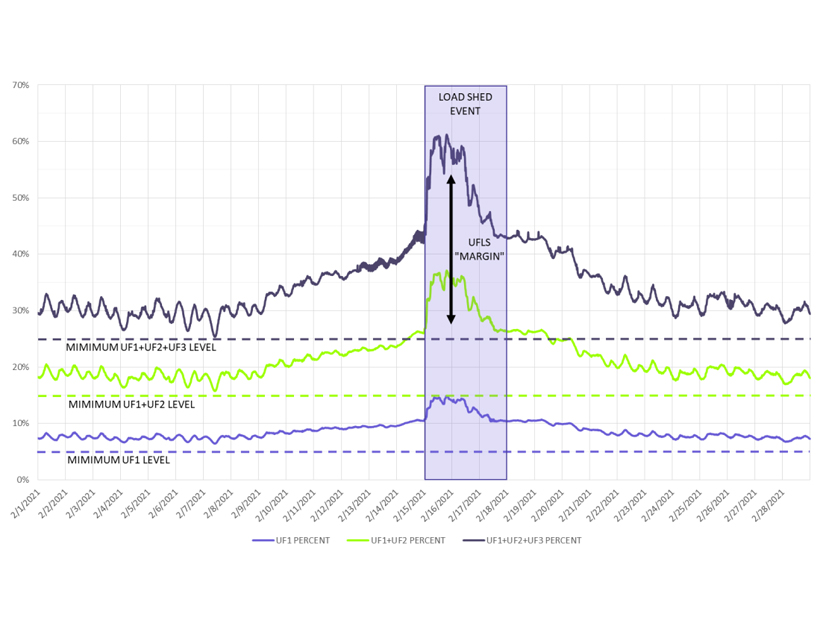
In its first Lessons Learned report of the year, NERC said the winter storms of February 2021 and resulting mass outages in Texas illustrate the benefits of allowing transmission operators (TOPs) greater flexibility to manage firm load shed operations.
The Managing Underfrequency Load Shed Obligations and Service to Critical Loads during an Energy Emergency report, released last week, is unusual in that Lessons Learned reports typically do not reveal details about the location, date or entities involved with a particular event. In this case, NERC still withheld as much information as possible about the utilities discussed in the report.
The document builds on a FERC and NERC joint report on the February storms, a section of which discussed the difficulties experienced by TOPs managing the load shed ordered by ERCOT on Feb. 15 in order to keep the power grid stable. Particularly challenging were the situations — which became more frequent as the day wore on — when ERCOT began to order TOPs to “implement controlled outages of electric circuits normally reserved for” underfrequency load shed (UFLS) operations.
Grid planners “typically exclude load connected to UFLS relays from manual load shed plans whenever possible,” the Lessons Learned report said, because these circuits are critical to bringing the grid back under control during an underfrequency event. Underfrequency programs are normally designed to “shed a predetermined percent of load at specific frequency setpoints.” If this load has already been taken offline manually, the system cannot function as intended and a frequency excursion becomes more likely.
ERCOT requires at least 25% of load — not including critical loads such as hospitals, military facilities and police stations — to be reserved for automatic load shedding schemes, including UFLS. However, at times on Feb. 15 and 16, load shedding in the region progressed to the point where UFLS resources represented more than 60% of the remaining load left online, and the grid was already dangerously close to a complete breakdown. (See ERCOT: Grid was ‘Seconds and Minutes’ from Total Collapse.)
This situation was a significant risk because it was far outside the bounds of any scenario envisioned by grid planners. UFLS relays were designed to take no more than 25% of load offline, but here they had control over more than half of the grid at some points. As the report said, “an actual UFLS operation while the system is in this state could lead to an overshoot in frequency and further system instability.”
In response to these conditions, TOPs requested and received approval from their reliability coordinators (RC) to use UFLS circuits to meet ERCOT’s load shed orders; ERCOT’s protocols and operating guides have since been revised to “specifically allow entities to shed UFLS load as long as they continue to meet their UFLS obligations.” NERC’s report said this strategy might be useful on a wider basis, and that RCs and planning coordinators should consider revising their own UFLS programs to allow the practice.
“Having this operational flexibility would increase the amount of load available for rotation, spread the burden of outages to a larger pool of load, and reduce customer outage times,” NERC said. In addition, “taking this approach of including UFLS circuits during load shed lowers the risk of an overshoot in frequency if UFLS operates when actual UFLS loads substantially exceed the required obligations.”
The organization also mentioned that rather than giving the same treatment to all loads designed as critical, TOPs can consider adapting their strategies to the specific requirements of each situation. If a particular load can “withstand outages of several hours without having negative impacts,” it might be considered for load shed of a shorter duration.


